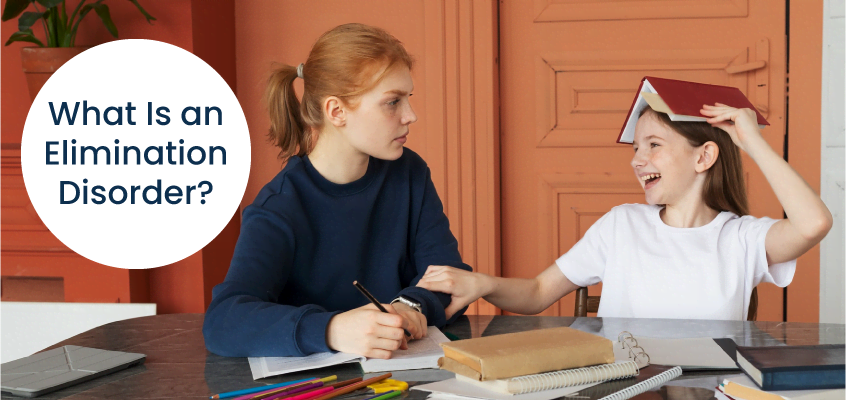Introduction
Childhood psychological problems often cause suffering not only in the child but also in the parents and close family. This psychological discomfort during childhood can manifest in unusual ways, such as elimination disorders.
Elimination disorders involve issues relating to sphincter control and usually connect with feelings of discomfort and anguish in the child. This article will discuss elimination disorders’ characteristics, causes, symptoms and possible treatments.
What is an elimination disorder?
An elimination disorder refers to an alteration that can appear during childhood. It affects the child’s psychological state and behaviour and generates worry and anxiety in the rest of the family.
Sometimes, this alteration can become so pronounced that it becomes a source of conflict within the family nucleus. The nature of this disorder is related to sphincter control. Although there are individual differences, children generally acquire sphincter control between 18 and 24 months.
In elimination disorders, the child does not achieve this control, which usually leads to functional enuresis or uncontrolled urination. It tends to appear after the child has mastered bladder control. The diagnosis does not usually happen before age 5, and bedwetting often occurs during sleep.
How many types of elimination disorders are there?
The type of elimination disorder is closely related to the age gap, that is, if it happens before or after age 5. Here are the types of elimination disorders:
- Primary enuresis: It is the most frequent type and is the one that occurs before the age of 5. In this case, the child has never managed to gain control over their bladder. Primary enuresis is more common in boys. When bladder control has never been established, enuresis is defined as primary, and when incontinence recurs after at least six months of contingency, it is referred to as secondary.
- Secondary enuresis occurs after the age of 5 after the child has managed to gain control over their bladder. In this case, it is a regression in which the child begins to urinate without being able to control it. Secondary enuresis is more frequent in girls. Secondary enuresis is a condition that appears at least six months — and, in some cases, even several years later — after a person has learned to master their bladder. Nearly 25% of children who wet the bed will have secondary nocturnal enuresis (S.N.E.). By age ten, up to 8% of children will develop S.N.E.
- Encopresis: Another type of elimination disorder is encopresis. It refers to uncontrolled defecation. Children with this disorder generally have constipation problems, so they haphazardly evacuate faeces. Encopresis is an issue that can emerge in children aged four or more due to long-term constipation. With constipation, kids have fewer bowel movements than usual, and the ones they do have can be tough, dry and challenging to pass.
What are the symptoms of an elimination disorder?
The symptoms of this disorder are very varied. In general, the most common symptoms are:
- Incontinence: This is the loss of control over urination or defecation. In this situation, the child urinates or defecates without being able to control it.
- Bedwetting: Uncontrolled urination during sleep usually occurs in children with primary enuresis. To diagnose this type of disorder, it is necessary that the child has wet the bed at least twice a week for three consecutive months and that this happened without the child being able to control it.
- Soiling involves the uncontrolled evacuation of faeces, which can occur in children with encopresis and those without the condition.
What are the causes of an elimination disorder?
When trying to establish the causes of this disorder, we find that they can be both physical and psychological. Among the biological reasons, we can find:
- Hormonal problems: These are usually related to an alteration in the production of vasopressin, a hormone responsible for regulating water absorption in the kidneys. A slight delay in maturity can affect its capability to hold urine.
- Structural problems can be congenital or acquired, including malformations of the urinary system and urethral strictures or blockages. An abnormality, an inborn genital tract, could happen due to a structural problem and cause primary amenorrhea.
- Neurological problems usually result from an alteration in the nervous system. Blood and oxygen both have a significant role in shaping this problem to a large extent. Diseases such as multiple sclerosis, cerebral palsy, and more can cause this.
- Intestinal problems: These problems are related to improper digestion of food which results in constipation or diarrhoea and can alter the functioning of the intestines and the bladder.
As for the psychological causes, we can find the cause of elimination disorder:
- Family problems usually arise when there is a lot of conflict or tension. In such families, children do not feel safe or secure. They may have witnessed violence or been the victims of abuse. Such children tend to internalize their feelings and bottle them up inside. It can lead to elimination disorders as they try to find a way to express themselves and release their pent-up emotions.
- Problems at school: These can be caused by bullying, low self-esteem, learning difficulties and more. Children struggling at school may try to find ways to cope with the stress. One way of doing this is through elimination disorders. Unstable home life can include divorce, moving homes frequently, or having a parent with a mental illness. Such children often feel insecure and anxious.
- Sexual abuse: It is one of the leading causes of elimination disorders in girls and is caused by having been sexually abused by someone. It can leave the child feeling scared, powerless, and ashamed. These are just some of the psychological causes of elimination disorders. If you are struggling with such a disorder, it is crucial to seek professional help.
- Trauma: It usually happens when the child has experienced a traumatic event, such as the death of a loved one. It can lead to the child feeling overwhelmed and helpless. As a result, they may try to find ways to cope with the trauma, which can include elimination disorders.
What are the risk factors for an elimination disorder?
Parents face many stressors that may increase the risk of their child developing an elimination disorder. Factors that may contribute to the development of elimination disorder include:
- Lack of support from family or caretakers
- Chaotic or unstable home environment
- Poverty
- Being the victim of abuse or neglect
- Having a family member with mental illness or substance abuse problems
- Having a medical condition that affects the urinary or gastrointestinal system
- Take certain medications that cause urinary or faecal incontinence.
Elimination disorders are more common in boys than girls and usually appear during toilet training. Children with difficulty with toilet training or who experience a major stressful event, such as the death of a family member, are at increased risk.
What is the treatment for an elimination disorder?
The possible treatment will depend on the type of elimination disorder the child is facing and the causes and symptoms. In general, the most common treatments are:
- Psychotherapy is usually very effective in treating psychological conditions such as encopresis or enuresis. This therapy aims to help the child cope with the problem and work on the different emotions that this may be causing.
- Medication: Sometimes, medication may be necessary to treat the disorder. For example, in the case of encopresis, parents can administer medicines to their children to treat constipation or diarrhoea.
- Behavioural therapy: This therapy is usually very effective in treating enuresis. This therapy aims to help the child to control their bladder and to modify their bedwetting habits.
- Toilet training: In the case of encopresis, toilet training may be necessary to help the child learn how to control their bowels.
Conclusion
Elimination disorders can be very distressing for both children and their families. Seeking professional help if your child has an elimination disorder is essential. Most children with an elimination disorder will improve and eventually recover with treatment.
Parents must be patient and understand that treatment may take some time. There may be setbacks along the way, but with help, children can and do recover from elimination disorders.
| [1] | E. Plumptre, “What to know about elimination disorders,” Verywell Mind, 28-Feb-2022. [Online]. Available: https://www.verywellmind.com/elimination-disorders-. [Accessed: 03-Jan-2023]. |
| [2] | W. King, “Elimination disorders,” Lumenlearning.com. [Online]. Available: https://courses.lumenlearning.com/wm-. [Accessed: 03-Jan-2023]. |





